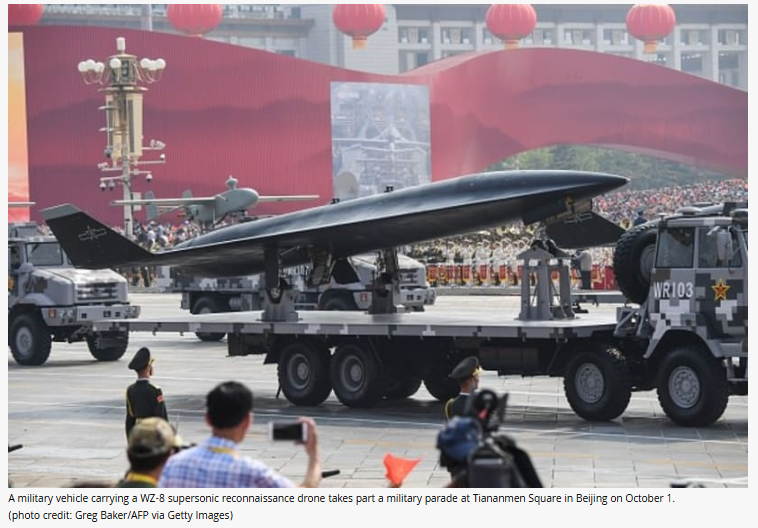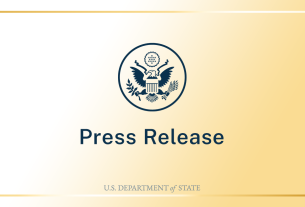The documents don’t identify the Chinese drone specialists involved in the project that it outlined and Reuters was unable to determine their identity.
Kupol has taken delivery of seven military drones made in China, including two G3s, at its headquarters in the Russian city of Izhevsk, according to the two separate documents reviewed by Reuters, which are invoices sent to Kupol in the summer by a Russian firm that the two European intelligence sources said serves as an intermediary with Chinese suppliers. The invoices, one of which requests payment in Chinese yuan, don’t specify delivery dates or identify the suppliers in China.
The two intelligence sources said the delivery of the sample drones to Kupol was the first concrete evidence their agency had found of whole UAVs manufactured in China being delivered to Russia since the Ukraine war began in February 2022.
They asked that neither they nor their organization be identified due to the sensitivity of the information. They also requested certain details related to the documents be withheld, including their precise dates.
Double standards in supplying weapons
The sources showed Reuters five documents in all, including two Kupol reports to the ministry in the first half of the year and two invoices, to support their claims of the existence of a Russian project in China to manufacture drones for use in Ukraine. The program has not previously been reported.
Kupol’s reports to the ministry didn’t give more precise locations for sites related to the project. Reuters was also unable to determine whether the defense ministry gave the company the green light to proceed with the serial production proposed.
Beijing has repeatedly denied that China or Chinese companies have supplied Russia with weapons for use in Ukraine, saying the country remains neutral. In response to questions for this article, the foreign ministry told Reuters that China’s position presented a contrast with other nations with “double standards on arms sales” whom it said had “added fuel to the flames of the Ukrainian crisis.”
The ministry said earlier this month that there were no international restrictions on China’s trade with Russia when responding to a Reuters report that Kupol had started to produce the Garpiya-A1 long-range military drone in Russia using Chinese engines and parts.
The new documents reported here indicate state-owned Kupol has gone further by sourcing complete UAVs from China.
Both Russia and Ukraine are racing to ramp up their production of drones, which have emerged as highly effective weapons in the war.
David Albright, a former U.N. weapons inspector who heads the Institute for Science and International Security research group and has conducted extensive work on Chinese and Russian cooperation on drone production, told Reuters that Kupol could skirt Western sanctions on Russia by setting up a production facility in China where it could access advanced chips and expertise.
But Bendett at CNAS said Beijing had reason to tread carefully: “For a factory to exist officially that builds UAVs for the Russians exposes China to some of the more severe effects of the sanctions, so it’s not clear the extent to which China would be willing to expose itself.”
US Reapor drone comparison
The G3 is an upgraded version of the Garpiya-A1 drone, according to Kupol’s reports sent to the defense ministry. It was redesigned by Chinese experts working off blueprints of the Garpiya-A1, they said.
Kupol said that within eight months, the project in China would be ready to produce a Chinese-designed REM 1 attack UAV with a payload of 400kg. The two European intelligence sources said this system would be similar to the U.S. Reaper drone.
The sources said another Russian defense firm called TSK Vektor acted as the intermediary between Kupol and Chinese suppliers in the project. They said the Russian firms worked with a Chinese company called Redlepus TSK Vector Industrial, based in Shenzhen, without specifying Redlepus’ role.
TSK Vektor and Redlepus didn’t respond to requests for comment.
A separate document reviewed by Reuters reveals plans involving Kupol, TSK Vektor and Redlepus to establish a joint Russian-Chinese drone research and production center in the Kashgar special economic zone in China’s Xinjiang province.
Reuters was unable to determine who produced the document, which bore the logos of the three companies, or identify the intended recipient. The 80-hectare “Advanced UAV Research and Manufacturing Base” would be able to produce 800 drones a year, the document said. No timeline was given for when it would be operational.
Last week, Russian President Vladimir Putin said his military had received around 140,000 drones in 2023 and that Moscow planned to increase this number tenfold this year.
“Whoever reacts faster to demands on the battlefield wins,” he told a meeting in St Petersburg about drone production.



